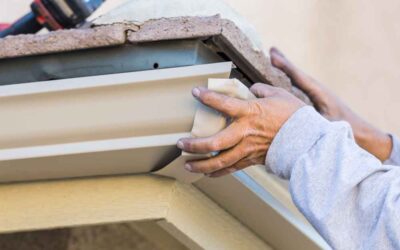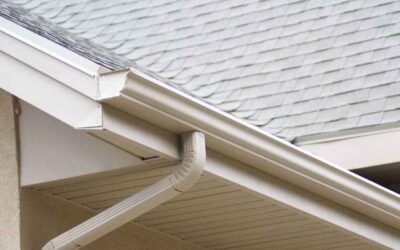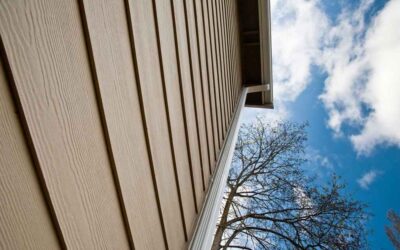Moss and algae can both cause problems for your roofing system, but how critical is it to remove them? At Rojas Roofing, our goal is to help you extend the life of your roof and keep your home weathertight, so we want you to know when to worry about moss and algae growth and what to do when you encounter one or both on your roof
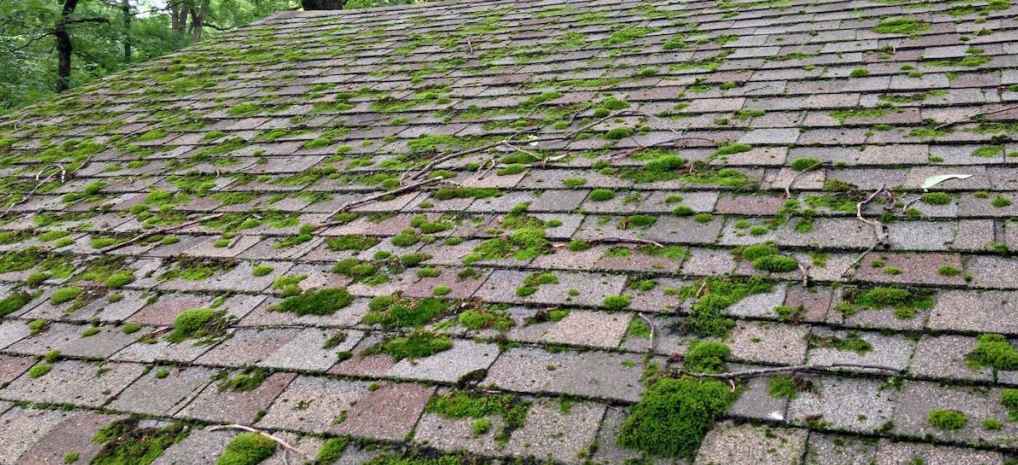
Table of Contents
What is the difference between moss and algae?
Do moss and algae cause roof or shingle damage?
What to Avoid When Treating for Moss and Algae on a Roof
How to kill moss and algae on a roof
What to do if you can’t tell whether it’s moss or algae
How to prevent moss and algae from growing on your roof
What is the difference between moss and algae?
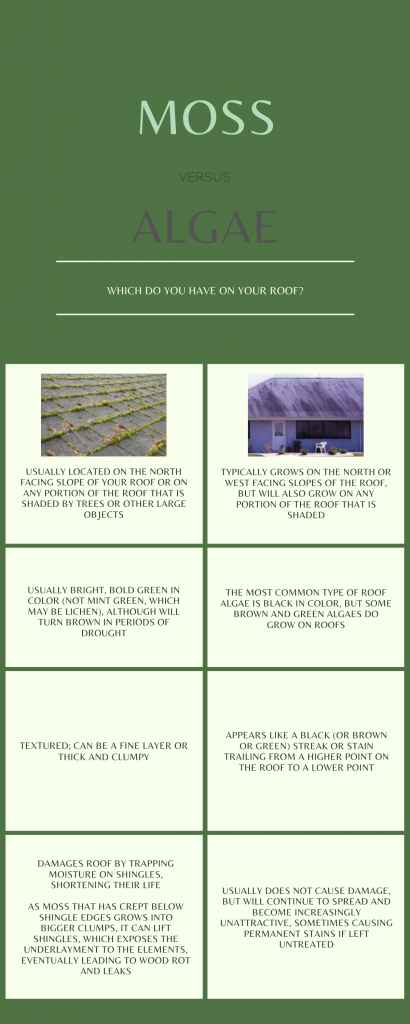
Although moss and algae are typically both located on north-facing roof slopes, there are some big differences that will help you identify which is growing on your roof and how you treat it. Moss is typically a light, bright green color and is raised or textured. It can grow in a single layer or large clumps. Algae, on the other hand, grows flat on the roof, looking more like a black stain that will often start as thin streaks but can develop into large unsightly patches.
Both moss and algae rely on warmth and humidity for survival, so they both thrive in shady areas where the sun cannot dry them out. Although moss grows roots into your shingles, it actually gets nutrients by gathering moisture on its leaves, which is why it can grow easily on most types of roofing systems. Although algae spores do not have roots or leaves, they get their nutrients from a combination of water and the limestone filler used in most asphalt shingles. Algae also grows well on wood shingles and concrete tiles, especially when the roof planes are shaded.
Do moss and algae cause roof or shingle damage?
Moss can be detrimental to the performance of shingles or the entire roofing system, so it is important to remove moss as soon as it is detected. Moss traps water in its leaves, and this means that the shingles beneath it are consistently wet and will eventually decay. Tiny moss spores can also lodge beneath the edge of a shingle and will lift the shingle as the moss grows into a larger clump. This will cause the underlayment below to be exposed to the rain and will eventually lead to wood rot and roof leaks. Removing algae promptly can save a homeowner thousands of dollars by extending the life of their roof.
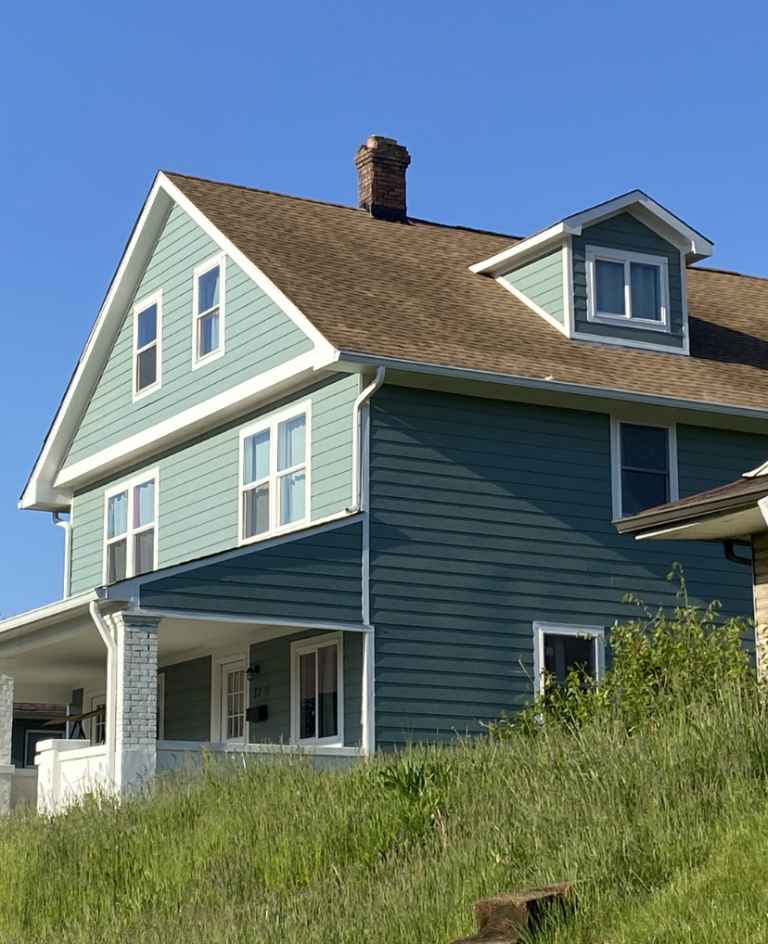
Algae, on the other hand, is mostly unattractive, but it is still wise for a homeowner to treat it because it can decrease the value of the home. When algae – usually gloeocapsa magma – dies, it leaves black-green streaks and/or dark spots on a roof. When these streaks are left untreated, they have a tendency to stain the roof shingles permanently. In very extreme cases, the moisture trapped on the roof by the algae can also shorten the life of the roofing system and eventually lead to wood rot and leaks much like moss does, but this usually happens over a longer period of time or if conditions are perfect for algae growth.
What to Avoid When Treating for Moss and Algae on a Roof
Although roof shingles provide incredible protection for your home, they still need to be dealt with carefully. There are several ways to remove moss and algae, but here is a quick list of things you should never do:
- Don’t use a pressure washer on asphalt shingles because you may dislodge the granules on top of the shingles
- Never force water beneath the shingle edges because you may loosen or dislodge shingles
- Never scrub, scour, or scrape the shingles so that you don’t lose granules or damage or break shingles
- Don’t use harsh chemicals, such as bleach, because they can dry out the shingles and causing curling and a shortened roof life
- Avoid using products that contain iron substances, which will leave rust-colored stains on your shingles
- Skip using common weed killers because they typically don’t work
How to kill moss and algae on a roof
To clean moss or algae off the roof yourself, buy a moss- or algae-specific cleaner that does not use bleach and is rated by the EPA. Alternatively, you may create a solution of:
- 1-2 quarts of bleach
- 1 gallon of water
- ¼ cup of trisodium phosphate or a substitute, such as OxiClean (this will help remove any stains left behind by algae)
Make sure you are aware of the drawbacks before you applying any homemade solution.
You will first want to gather your materials. You may want to use:
- non-slip shoes
- old clothes
- a garbage bag
- rubber gloves
- protective glasses or goggles
- a ladder
- a harness or rope to secure yourself to the roof.
Then, follow the steps below for the appropriate application method:
For Liquid Solutions
It is best to apply liquid solutions to your roof on a cloudy day so that it does not evaporate before it is able to effectively kill the moss or algae.
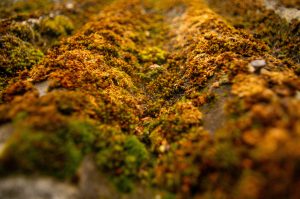
- Moss Out
- Lilly Miller Moss Out Spray (will also kill algae)
- Moss Melt
- Safer Moss & Algae Killer
- Wet & Forget (kills moss, mold, mildew, & algae)
STEP 1: After gathering the materials listed above, you will want to cover or use plain water to thoroughly wet any plants or landscaping that you want to protect.
STEP 2: Remove any clumps of moss that you are able to easily remove (this step does not apply for algae removal). It may be easier to do this once you have sprayed the moss with water. You may use a soft-bristled scrub brush, using gentle downward strokes (never stroke from bottom to top) to loosen or remove what will easily dislodge from the shingles.
STEP 3: Spray the moss and/or algae with the store-bought solution (make sure you read the instructions on the bottle for how to prepare your spray) or your DIY formula.
STEP 4: After leaving the spray on for 15-20 minutes (check your store-bought bottle for an exact time for the product you chose), hose down the roof with plain water using low pressure. Most of the moss will come off with the water, but it is important to spray down the entire treated area thoroughly so that you don’t leave chemicals on your roof. If you are treating only algae, this is your last step!
Please note: not all sprays need to be rinsed off. Read the product instructions for information specific to your product.
STEP 5: Any remaining moss should now be loose enough to remove manually. Use a gentle tug or pull, but if the moss is too embedded in the shingle and will not come off, do not force it. Contact your local, go-to roofing company for guidance on next steps.
For Granules and Micro-Granules
STEP 1: After gathering any needed materials, you will remove any clumps of moss that you are able to easily remove (this step does not apply for algae removal). It may be easier to do this once you have sprayed the moss with water. You may use a soft-bristled scrub brush in gentle downward strokes to loosen or remove what will easily dislodge from the shingles. Never stroke from bottom to top because you may loosen, bend, or break shingles.
STEP 2: At the peak of the roof, leave a line of granules or micro-granules that run the entire length of the roof. Make sure to place the granules on both sides of the peak. When it rains, the granules will slowly wash down the roof, killing the moss in its path.
STEP 3: Once dead, the moss may fall from the roof on its own. Any dead moss that remains on the roof should be removed by hand. Gently tug or pull, but if the moss is too embedded in the shingle and will not come off, do not force it. Contact a professional roofing company for guidance on next steps.
What to do if you can’t tell whether it’s moss or algae?
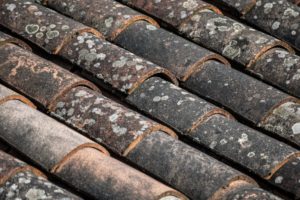
If the spores growing on your roof don’t look exactly like moss or algae, it is possible that you have lichens growing on your roof. Lichens form out of a symbiotic relationship between mold and algae. They typically vary in color and are more raised than algae but flatter than moss. They can be shaped like coral or shrubs and may form a crust on the roof shingles. The damage that lichens cause is similar to moss, but it is easy to treat with a product such as Wet and Forget Outdoors.
If you’re still unsure of how to treat the growth on your roof, call your local, go-to roofing company to ask for guidance.
How to prevent moss and algae from growing on your roof
Copper and zinc are both lethal to moss and algae. You can have shingles laced with copper granules or a 6-inch wide strip of copper or zinc installed beneath the shingle layer closest to the roof peak. About 2 inches of metal will be exposed below the shingling, and this causes metal molecules to wash down the roof every time it rains, killing any moss or algae that may be trying to take hold. These methods are only recommended to homeowners who are doing a full roof replacement because making additions to a pre-existing roofing system may compromise the integrity of the roof.
If you’d like to prevent moss or algae growth on an existing roof, you should first remove any sources of shade as best as possible. You might then consider having copper or zinc strips (copper is more toxic, but zinc is more affordable) installed near the peaks of the roof. These should be attached to the roof with nails or screws that have rubber washers to prevent leaking, and they should be checked regularly. To avoid any unpleasant surprises in the future, it is a good idea to set up a maintenance plan with a professional, local roofing company that is equipped to help you extend the life of your roof.
Would you like professional help with your moss or algae problem?
Rojas Roofing is your local, go-to roofer for Indianapolis and the surrounding areas, and we’re happy to help you remove and prevent moss or algae growth on your roof. For professional service, call (317) 864-6193 or fill out this contact form to schedule your consultation.

